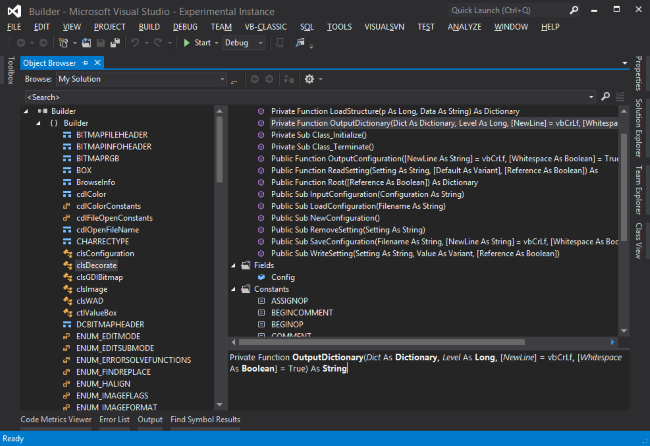

- Microsoft visual basic for applications download full#
- Microsoft visual basic for applications download code#

Lbl_Display.Caption = "You typed " + txt_Name.Text In this example, we’re simply going to take the textbox value and echo “You typed value” into the label control. Click the cmd_Go control created earlier, and select the Click event and then select Edit in Active You’ll see the forms and controls that you created under Objects.
Microsoft visual basic for applications download code#
Event Procedureīack in the code editor, hit F-12 to access the Event Procedures dialog. You can return to the form view at any time using the View menu. Once you’ve staged your form, given all of the controls names, set colors, etc - choose View -> Code to save and close the form editor and return to the code view. I have also edited the Caption and Text properties respectively. This is what you’ll use to reference controls later in code. The most important property to set, is CtlName. With a control active, you can edit its properties from the drop-down menu at the top, and enter the value in the text box to the right. Like in all windows versions, controls have properties that define their state and behavior. Creating a FormĬreate a Form, File -> New Form to start.ĭouble click any of the controls from the list on the left, and they will be added to the form.

c:\vbdos\vbdos.exe) - this will ensure the working directory points to your project directory
Microsoft visual basic for applications download full#
Navigate there and then launch VBDOS.EXE (by calling the full path of the exe, e.g. You’ll want to create a directory for your new project. Run SETUP.EXE from Disk 1 and follow the instructions. If you are using DosBox, or are able to copy large volumes to your DOS installation in one go, you can extract the floppy images into a single folder. Get the Professional edition, which provides support for ISAM database connection and manipulation. You can download the program from winworldpc. It’s an experience that should be familiar to anyone who has used the windows versions. It has all the familiar elements: Button, Text Box, Checkbox, Combo Box, List, etc. It succeeds QuickBASIC, but unlike it’s predecessor provides an event-driven GUI rendered in text mode using ASCII characters. It was actually the second Visual Basic release coming after the Windows version 1.0 in 1991. Microsoft released Visual Basic 1.0 for MS-DOS in 1992, at a time when many users and businesses were still using DOS. I’m going to explore some of the basics of the program, how you can use it, and some things I learned along the way. The task of creating it was made easy thanks to the not-very-well-known Microsoft Visual Basic 1.0 for MS-DOS. I recently posted the CloudWisp Application Loader to this site - an MS-DOS program for organizing your games and applications.


 0 kommentar(er)
0 kommentar(er)
